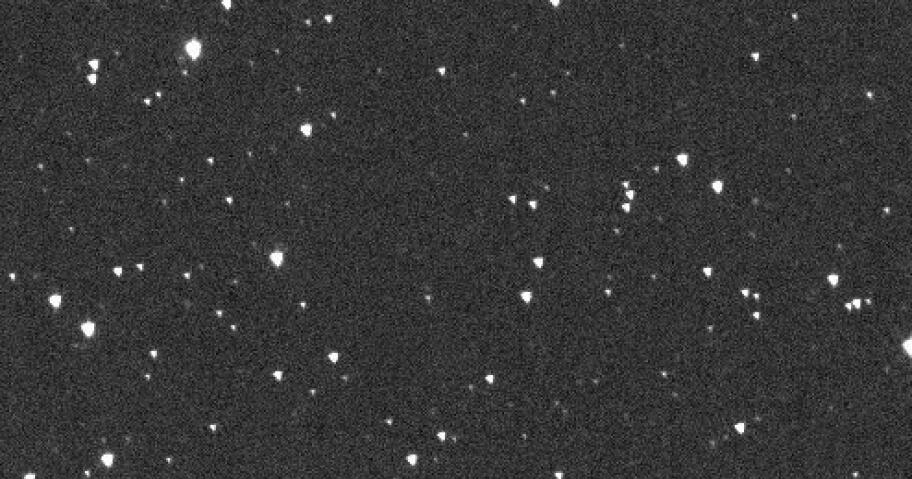An asteroid measuring as wide as 295 feet is possibly headed right toward Earth, but don’t run for cover just yet.
A NASA-funded telescope in Rio Hurtado, Chile, first spotted the asteroid, named 2024 YR4, on Dec. 27.
“The object had a close approach with Earth,” which made it bright enough to be detected in surveys for asteroids, according to the Center for Near Earth Object Studies.
Observations and data gathered since the initial sighting concluded that, as of Jan. 31, the asteroid is 30 million miles from Earth and moving farther away on its orbital path around the sun.
There’s a more than 1% chance the asteroid will make its way toward Earth and crash-land on the planet in December 2032. But scientists say they expect the asteroid’s future trajectory and impact probability to change as astronomers collect and analyze more data.
Identifying an asteroid whose path may be toward Earth isn’t uncommon, said Davide Farnocchia, a navigation engineer at NASA’s Jet Propulsion Laboratory and the Center for Near Earth Object Studies.
“When an asteroid is newly discovered, its trajectory can only be computed approximately, and a possible predicted collision with Earth years in the future may not be immediately ruled out,” Farnocchia said. “As new observations are collected, the orbit becomes more accurate, and a predicted impact can generally be ruled out.”
What makes 2024 YR4 stand out is that a majority of asteroids do not have a 1% or more chance of making contact with Earth, especially not “one large enough to cause serious damage,” he said.
“However,” Farnocchia said, “it is overwhelmingly more likely that 2024 YR4 will miss the Earth in 2032 rather than impact.”
In the unlikely event that the asteroid’s trajectory is toward Earth, its destination would be somewhere along a “risk corridor” that extends across the eastern Pacific Ocean, northern South America, the Atlantic Ocean, the Arabian Sea and South Asia.
Astronomers will report updates on the asteroid’s future path and impact probability on the Sentry webpage.
Asteroids, in general, are not something people should be overly concerned about, Farnocchia said.
NASA, in collaboration with international partners, has been surveying the skies for decades to identify asteroids.
“To date, most of the large asteroids capable of causing catastrophic damage to Earth have been discovered, and they have been shown to not pose a threat,” he said.
An asteroid becomes a meteorite when it travels to Earth from a nearby orbit or the outer solar system and collides with Earth, according to the United States Geological Survey.
Small asteroids typically burn up in the upper atmosphere before ever reaching Earth’s surface to become meteorites.
Slightly larger asteroids may make it through the atmosphere but often crash at locations that cause minimal or no immediate damage, according to the USGS. Many meteorites end up in the ocean or in open areas.
Scientists are currently studying asteroids in our solar system to understand their potential to collide with Earth and what risks they pose on impact.
In 2021 a collaborative of scientists published a report that identified the immediate effects of an asteroid, including “shock waves that can knock down forests and buildings, thermal radiation that can set fire to surrounding environment and tsunami waves for impacts in the ocean.”
Long-term effects could include changing how the ecosystem evolves. According to the report, “bare soil allows more rainwater runoff, changing the way that erosion works in the ecosystem. Dust from the impact or air burst can make it into the atmosphere, with climate effects.”
During the 1908 Tunguska event in Siberia, the impact of a 213-foot meteor lofted debris, creating bright nights for several days over Europe and Asia, from Siberia to the Atlantic Ocean, according to the USGS.
Another notable event involved the 2013 Chelyabinsk meteor, which was 66 feet in diameter. Chelyabinsk caused minimal damage to the area where it crash-landed, but its entry created an air burst.
That atmospheric explosion “created a shock wave that resulted in about 1,500 injuries to people and a large amount of damage to buildings and houses,” according to the USGS. The event demonstrated the more widespread danger of larger meteors.
The severity of an asteroid’s crash depends on the size and the composition of the meteor, according to the USGS.



